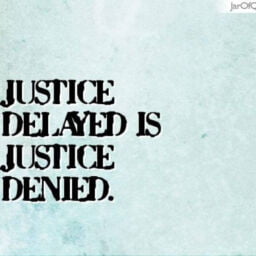INTRODUCTION
Interfaith marriage term implies the marriage of a couple, who belongs to a different religion. It is often known as “mixed marriage”. For instance, one of the couples belongs to the Hindu religion, and the other belongs to the Christian religion. In India, interfaith marriage has been regulated by “the special marriage act, 1954”, this law allows the people of different caste or religion to marry, without changing their religion
Marrying someone outside the religion or caste is not a crime, because love is not confined to these man-made social boundaries. We call, India is modernising in many terms, especially in terms of social values, behaviour, etc.
But still many parts of our society do not accept the interfaith marriage. They consider it as a social taboo, no one wants to even discuss such issues. Especially the rural areas define the practice of interfaith marriage as a social disgrace.
LEGAL PROVISIONS
Special Marriage act, 1954 specifically deals with Inter-faith marriages in India.
- Enacted on 09 October,1954
- Enforced on – 01 January 1955[1]
Every religion has its law, which regulates the marriages such as the Hindu Marriage Act, 1955, or the Muslim Marriage Act, 1954.
The Special Marriage Act, 1954 contains the provision for civil marriage, (the term civil marriage means to solemnize the marriage as a civil contract, there is the absence of religious ceremony) it applies to the people of India and Indian citizens residing in foreign countries, it is not confined to any religion or faith. It contains the procedure for registration, solemnization of marriage, and divorce.
It also lay downs the condition required for marriage under the Special Marriage act, 1954, which are as follows:
- Age criteria – It specifically mentions the age of bridegroom minimum to be 21 years of age during the time of marriage and bride minimum to be 18 years of age.
- Monogamous – Both parties should be unmarried.
- Mentally Fit – They must be sane/ mentally fit to take decisions so that they can decide for themselves.
- No blood relationship – The couple getting married should not have a blood relationship, otherwise, it will become the basis for the dissolution of that marriage.[2]
ARE INTERFAITH MARRIAGES SOCIALLY ACCEPTED?
Though we have the legal provisions to safeguard the people who are marrying outside their caste or religion. But socially they are not accepted, they are ostracised. We are adopting the modern values, accepting foreign traditions and norms, however still struck on these narrow thoughts regarding the social acceptance, if got married outside the clan. What the society will think, how they will look upon to them and their family. It will harm their family’s prestige. Several factors contribute to the making of the interfaith marriage concept something disgraceful.
2013 STUDY ON INTERFAITH MARRIAGES IN INDIA
- Paper on Interfaith marriage
In India, there is no survey conducted at the national level to check the extent of Inter-faith marriages. But one institute named the “International Institute for Population Sciences (IIPS)” which is being run by Students and the Faculty of the Central Government. This Institute in 2013 presented a paper on interfaith marriages in India, they took the reference of “India Human Development Survey (IHDS) data.[3]
- Statical Data
The survey conducted by IHDS gave insight regarding the trend of interfaith marriages among different age groups. The married women between the age of 15-19 have the highest percentage of marrying outside their religion (2.8%) whereas the married women between the age of 20 -24 are slightly decreased (2.3%) and then women between the age group of 25 -29 (2%) and women above 30 years of age (1.9%). It is also witnessed that the women in urban areas have more interreligious marriages (2.9%) in contrast to the rural areas (1.8%).
- Religion composition
The survey broadly classified the religious groups in which women marry outside their faith. The highest is amongst the Christians (3.55%), then Sikhs (3.2%), then Hindu (1.5%), and lastly Muslim (0.6%).
- State Composition
Talking about the state composition according to the IHDS survey Punjab holds the first position for having the highest mixed/Interfaith marriages (7.8%), then in the queue is Jharkhand (5.7%), followed by Andhra Pradesh (4.9%). The lowest percentage of interfaith marriage has been recorded by west Bengal (0.3%), followed by Chhattisgarh (0.6%).[4]
RECENT LAWS PASSED AGAINST THE FORCEFUL INTERFAITH CONVERSIONS FOR MARRIAGE
Recently the state of Uttar Pradesh executed a law against forceful interfaith conversion for the purpose of marriage, this same sort of step has been followed by some other states. The law passed by Uttar Pradesh defines the punishment and fines under different circumstances.
The first scenario – if anyone tries to convert the religion of other people through misrepresentation, coercion, undue influence, force, or by some other illegitimate way. Then it will attract a penalty of imprisonment of 5 years and a fine of Rs. 15,000/- minimum.
The second scenario – If whosoever tries to convert the religion of a woman, who is either a minor or a major who belongs to Schedule caste or Schedule tribe, then it will attract a penalty of imprisonment for a tenure of 3 years, which may extend up to 10 years, and a fine minimum of Rs 25,000 will be imposed.
The third scenario – If anyone tries to convert the religion at a mass level, then it will attract a penalty of imprisonment of a minimum of three years, which may extend up to ten years, and a fine of a minimum of Rs 50,000 will be imposed.[5]
JUDICIAL PRECEDENTS
- Gurwinder Kaur And Another vs State of Punjab and Others:
Case Brief
This case was filed by the petitioner, who got married against the wishes of the private respondents. It was an interfaith marriage. Petitioners were getting the threats from the private respondents
Judgement
The petition was disposed off and directions were given to the Superintendent of Police, Gurdaspur to take all the necessary steps which adhere to the law, to protect the life and liberty of the petitioners. However, the judgement did not validate the marriage of both the parties.[6]
- Mansi Kumari And Another vs State of Haryana and Others:
Case Brief
An instant petition was filed for the protection of the life and liberty of the petitioner, who is getting threats from the private respondents. The petitioners are major, and they have solemnized the marriage, against the wishes of private respondents, after the marriage, they were getting threats and dangerous consequences. The petitioner approached the Superintendent of Police, Faridabad for complaining about the threats, but return empty-handed, no action was taken. The petitioner then approached the court.
Judgement
The court disposed-off the case by giving direction to the Superintendent of Police, Faridabad to take the necessary steps to protect the petitioners, based on allegations made on them on the account of interfaith- marriage.[7]
TANISHQ CONTROVERSIAL ADVERTISEMENT
Many advertisements created controversies in India, one of which was Tanishq’s advertisement, which contextualized an inter-faith marriage. The netizens widely criticised the advertisement resulted in the creation of backlash, and due to that Tanishq take down the advertisement immediately. It clearly portrays religious sensitivity. But it became a matter of debate.[8] Many charismatic personalities also condemned the advertisement.
CONCLUSION
Interfaith marriage is an extremely sensitive issue as it is deeply connected with religion. We are adopting modern values, but somehow there is a need to reform the mentality. Love is not something that has any limitation, subjected to caste, creed, colour, or religion.
We have the legal provisions; however, it just provides the legal safeguards, what about social standing. Several instances are there, which states the fact that “two individuals of different religion got married and soon after that they were killed by their own family members to save their families prestige”. Though we are slowly heading towards a broader way of thinking, however, the pace is slow.
Author(s) Name: Deepak Kumar Chaurasia (Student, Chandigarh University)
[1]The Special Marriage Act, 1954, No. 43 of 1954, Acts of Parliament.
[2] A Brief Guide to Special Marriage Act, available at: https://blog.ipleaders.in/special-marriage-act/ (last accessed on 07 June 2021).
[3] Desai, Sonalde, Vanneman, Reeve, and National Council of Applied Economic Research, New Delhi. India Human Development Survey (IHDS), 2005. Inter-university Consortium for Political and Social Research [distributor], 2018-08-08. https://doi.org/10.3886/ICPSR22626.v12
[4] Explained: What a study in 2013 revealed about interfaith marriages in India, available at: https://indianexpress.com/article/explained/explained-what-a-2013-study-revealed-about-interfaith-marriages-6742991/ (last accessed on 07 June 2021).
[5] [Burning Issue] Inter-faith Marriages and Related Issues, available at: https://www.civilsdaily.com/burning-issue-inter-faith-marriages-and-related-issues/ (last accessed on 07 June 2021).
[6] Gurwinder Kaur And Another vs State of Punjab and Others on 4 March 2021, available at:https://indiankanoon.org/doc/195127684/ (last accessed on 09 June 2021)
[7] Mansi Kumari And Another vs State of Haryana and Others, available at: https://indiankanoon.org/doc/56953395/ (last accessed on 09 June 2021)
[8] What is the controversial Tanishq ad and why is #BoycottTansihq trending on social media? Available at:https://mumbaimirror.indiatimes.com/news/india/whats-the-controversial-tanishq-ad-and-why-is-boycotttanishq-trending-on-social-media/articleshow/78636691.cms (last accessed on 07 June 2021).
















